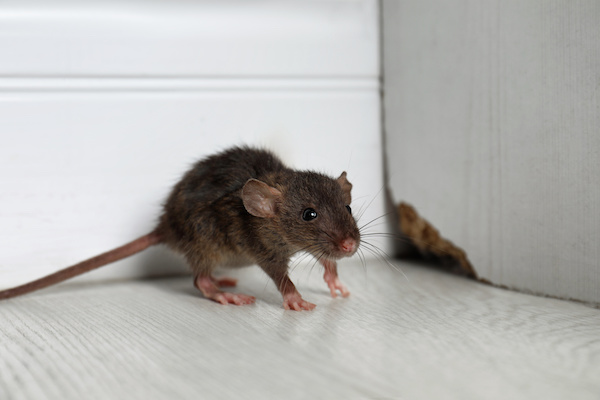The pitter-patter of tiny claws scurrying behind the walls can be both alarming and puzzling. You’re left wondering: why are there rats in the walls but seemingly absent within the house itself?
Rats, those intelligent and adaptable creatures, often find themselves drawn to the sheltered confines of walls. Yet, contrary to our immediate concern, these clever rodents avoid venturing further into the house, opting to navigate and establish their domains within the structural boundaries.
The presence of rats in walls but not inside your house can perplex even the most seasoned homeowners. However, a closer examination of their behavior and nesting preferences unveils a fascinating understanding of their survival instincts and environmental adaptation.
In this comprehensive guide, we’ll explore why rats are inclined to nest in walls, the underlying reasons behind their avoidance of interior spaces, and actionable steps to prevent and manage their presence.
Understanding Rodent Behavior: Why Walls Become Rat Havens
The penchant of rats to inhabit walls over your home’s interior is rooted in their innate survival instincts and nesting preferences. Understanding these behaviors can help you understand why rodents make the narrow, concealed spaces within walls their preferred abode.
- Nesting Habits: Rats, especially species like the common brown rat (Rattus norvegicus), exhibit a strong inclination towards nesting in concealed, secure, and dark areas. The cavities within walls provide a perfect haven for them to build nests, safeguard their offspring, and seek refuge from predators. These secluded spaces within walls offer safety and maintain an optimal temperature conducive to their survival.
- Access and Mobility: Once inside the wall cavities, rats find an extensive network of pathways that allow them to move undetected, explore, and establish their nests without venturing into the open spaces of the house.
- Food and Water Sources: Another crucial factor that lures rats towards walls is the proximity to potential food and water sources. Often, these rodents find accessible food supplies, such as crumbs or spills, in areas adjacent to walls. This proximity allows them to forage for sustenance while keeping a safe distance from the more inhabited regions of the house.
Why Rats Avoid Well-Traversed Areas
While rats cozy up in the concealed confines of walls, they curiously steer clear of direct exploration within the inhabited spaces of a home. Here’s why you’re less likely to see a rat sneaking around your floors:
- Human Activity and Predation Risk: Rats are intelligent creatures with a strong sense of self-preservation. They perceive areas frequented by humans as potentially dangerous zones where they’re more susceptible to encounters that could threaten their safety. The bustling activities and human presence within the house create an environment that rats instinctively avoid to minimize the risk of encountering predators or facing threats.
- Light and Noise Sensitivity: Rats have a heightened sensitivity to light and sound. The well-lit and noisy areas within the house serve as deterrents, causing discomfort and unease for these nocturnal creatures. Their preference for darkness and silence leads them to retreat to the quiet and dim recesses of walls rather than navigating within the well-lit and noisy confines of the house.
- Limited Nest Disruption: Establishing nests within walls allows rats to maintain a level of seclusion and stability for their colonies. By staying within the walls, rats secure their shelters, protect their young, and maintain a level of control over their immediate environment.
These factors collectively influence rats to remain within the walls, avoiding direct contact with the interior spaces of homes. Their behavioral adaptations enable them to coexist near human habitats while minimizing their visibility and interaction within the household setting.
Effective Strategies: Managing Rats in Walls and Preventing House Entry
Understanding the behavior and preferences of rats provides a foundation for implementing effective strategies to address their presence in walls and deter them from infiltrating the interior of our homes.
- Sealing Entry Points: The first line of defense against rats gaining access to wall cavities is sealing potential entry points. Conduct a thorough inspection of the exterior of your house, paying close attention to gaps, cracks, vents, and openings that rats could exploit. Sealing these entryways using wire mesh, steel wool, or concrete helps thwart their ability to enter the walls.
- Trimming Vegetation and Decluttering: Overgrown vegetation near the house creates pathways for rats to access walls. Keeping shrubs and tree branches trimmed away from the structure prevents rodents from using them as bridges to gain entry. Additionally, decluttering the immediate surroundings by removing debris or stored items minimizes hiding spots and discourages rodent activity near the walls.
- Maintaining Cleanliness: A clean and well-maintained household significantly reduces the attractiveness of your home to rats. Regularly dispose of garbage, store food in sealed containers, and promptly clean up spills or crumbs. By eliminating potential food sources, you discourage rats from foraging near the walls or attempting to enter the house.
- Implementing Rat Deterrents: Utilizing rat deterrents can discourage rodent activity in and around the walls. Try using essential oils like peppermint or eucalyptus to keep these pests at bay.
- Seeking Professional Assistance: In severe cases or persistent infestations, contact the experts at United States Pest Services! We can conduct a thorough assessment, employ advanced techniques for rat removal, and provide guidance on preventive measures tailored to your home’s specific needs.
By adopting these proactive strategies, homeowners can effectively manage the presence of rats in walls and create a less appealing environment, deterring these rodents from venturing into the interior spaces of their homes.
When you have rats indoors, give us a call. Contact Middletown’s best pest control company today!

